If the curb or street corner suddenly turns indigo, you may just have located a mulberry tree. These fruit-bearing deciduous trees thrive in Pennsylvania, growing happily along streets, in urban backyards, along the edges of fields and in the understories of forests. Pennsylvania mulberries produce berries that start ripening in early June across Pennsylvania.
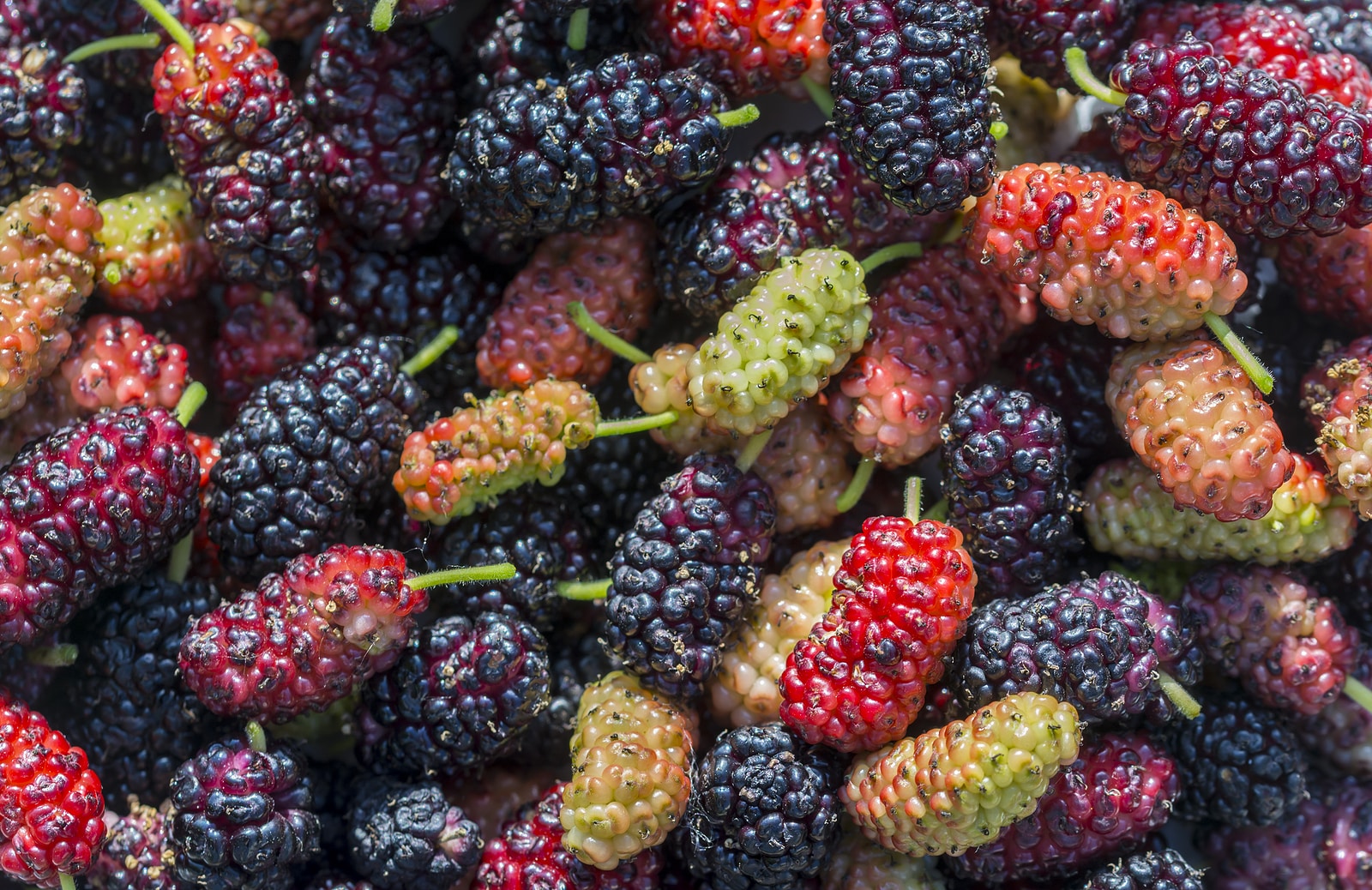
There are a two common varieties of mulberry trees in Pennsylvania. Red mulberry (Morus rubra) is native to PA with dull, dark green leaves that have a coarse texture. White mulberry (M. alba) is non-native and has shiny, smooth leaves. If you encounter a mulberry in PA, it’s likely red or white. The white mulberries are edging in on the red mulberry variety a bit, as they grow so abundantly and form hybrids with the red mulberry trees. If you see a tree with qualities of both, you’ve probably found a hybrid! Both red and white mulberry trees produce fruit that ripens to a near-black hue. Black mulberries (M. nigra) are a third variety and less common in Pennsylvania, as they prefer drier climates like that in California.
Birds and squirrels enjoy mulberries and help to spread their seeds, which take to challenging soils and conditions with ease. They grow so well in Pennsylvania that some have considered them a weed tree.
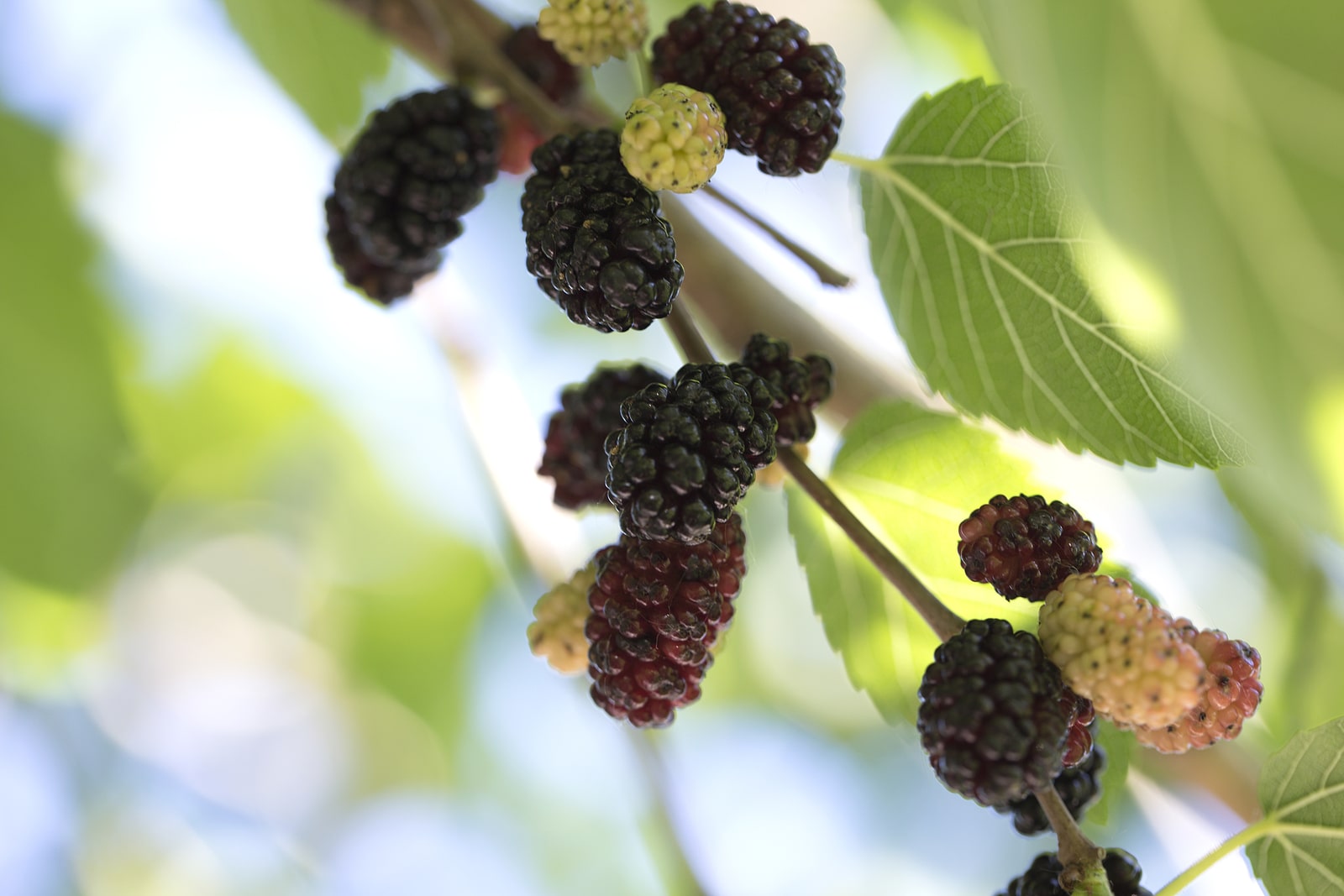
The actual mulberries aren’t really “berries” at all. They’re multi-fruits, produced by a tight cluster of flowers (inflorescence) that each produce an individual fruit. That matures in a mass, creating mulberries all over the branches. Figs and osage oranges are multi-fruits too. But, visually, a mulberry is quite similar to a blackberry, and tastes like a less-sour version. The fruit does not ripen all at once, but rather over weeks – sometimes up to four weeks! This allows you to pick and enjoy them for half a month or more.
If you have a mulberry tree, or happen across that indigo stain, we suggest plucking them to enjoy!
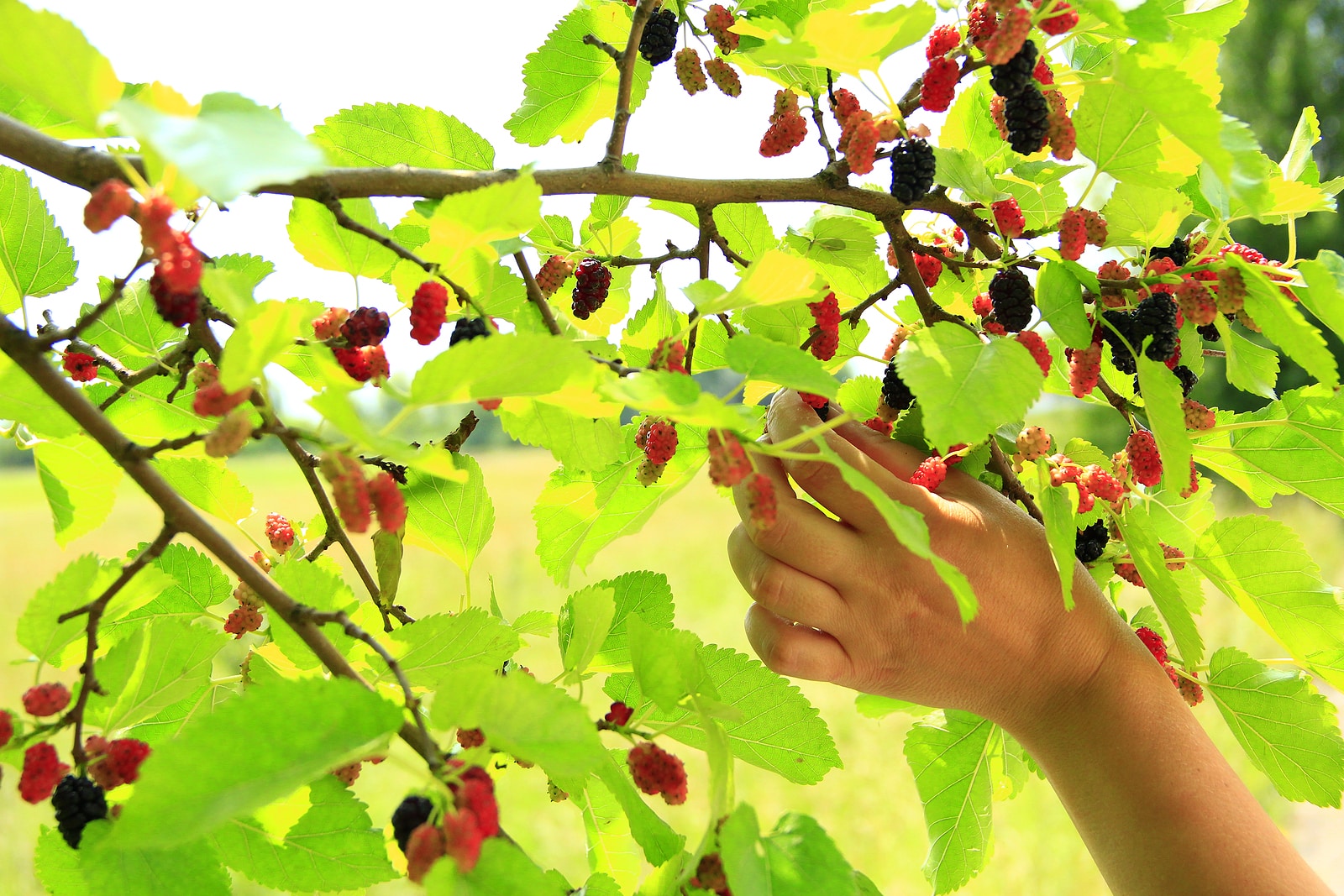
How to forage mulberries:
- Find the dark purple, near-black fruit that comes off the tree easily. Or, if you like sour, try the dark reddish-purple fruit.
- Pull it off, or gently shake the branch and collect the fruit with a tarp or cloth underneath. Mulberries can be tall trees, so you may need a rake or rope to shake the higher branches.
- Wash the mulberries and cook or eat them right away. They can store for no more than 48 hours.
- Be sure to wash your hands. The thin skins of mulberries breaks easily, which can stain hands and fingers.
- To extend their shelf life, freeze or dehydrate the mulberries.

Mary Bigham
Mulberries are rich in antioxidants, vitamins E and A, carotenoids and fiber. They also fight free radicals and promote collagen production for healthy, glowing skin. The mulberry leaves can be consumed in addition to the fruit, cooked or in salads or teas.
Mulberries are great all by themselves, or thrown on cereal or yogurt, like you would with any other berry. They’re also a fabulous ingredient for many cooked recipes, versatile and compatible. They’re less tart than a raspberry or cranberry, yet still sweet and a little savory or umami.
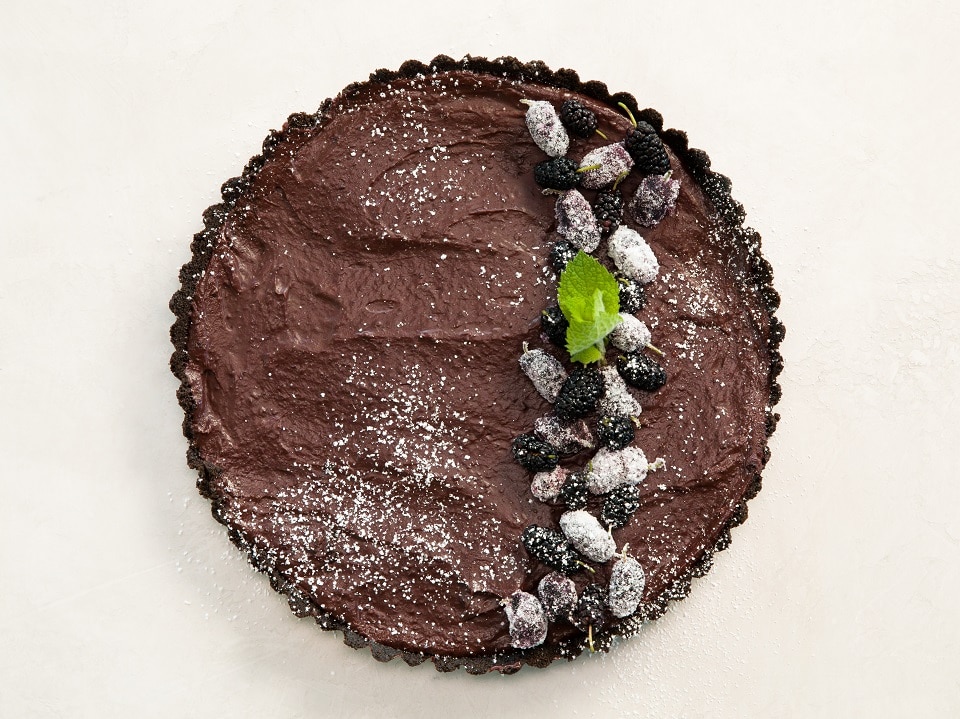
As part of our Foraged in PA Series, we’ve developed some awesome recipes for you to make the most of the mulberries near you in Pennsylvania. One such recipe is for a no-bake chocolate mulberry tart. Keep the oven off and whip up this divine dessert in just 30 minutes. It’s made with dark chocolate and a pound of mulberries, set in a chocolate cookie crust and chilled.
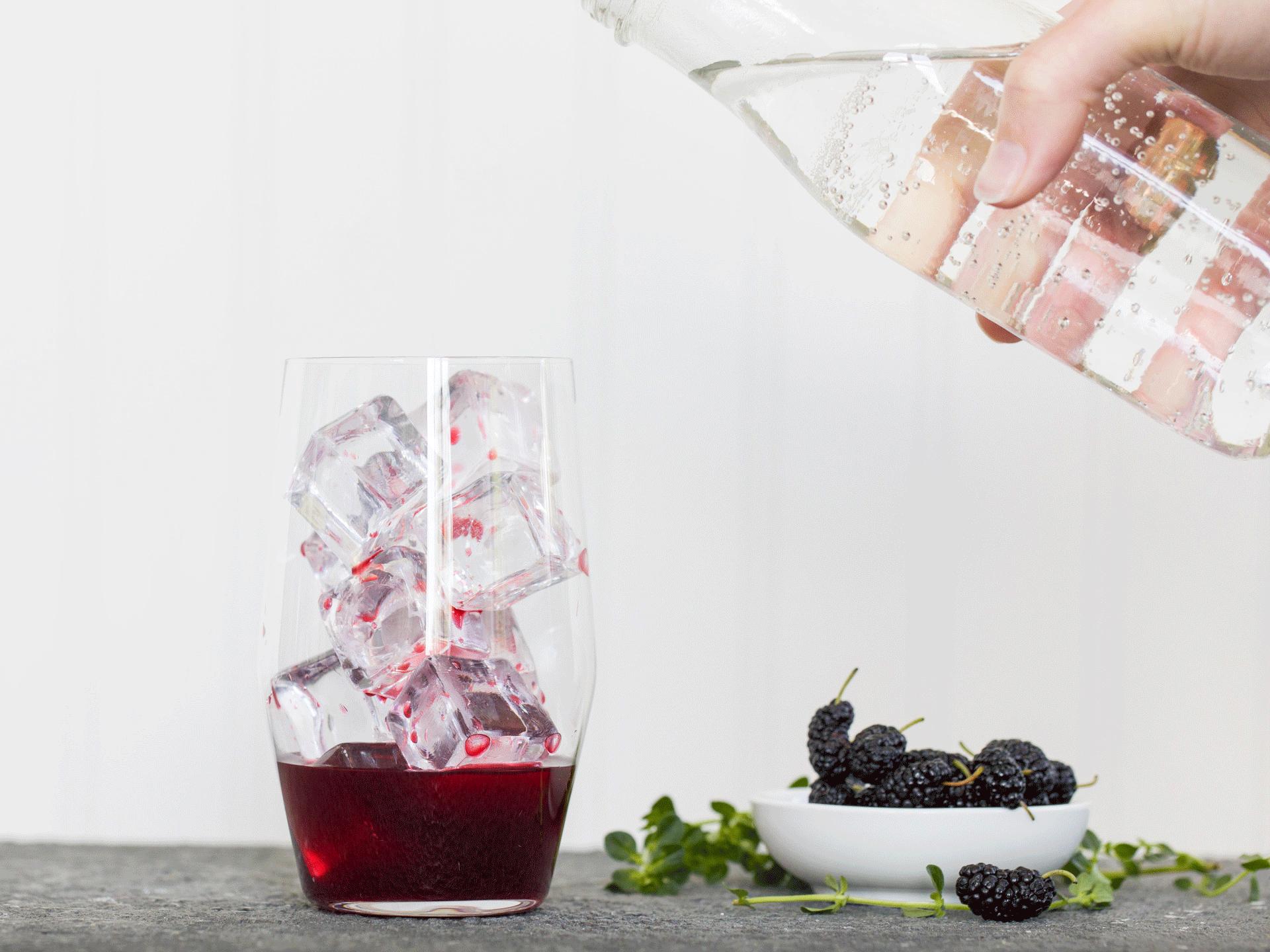
For your sipping pleasure, we suggest sparkling mulberry thyme shrub and mulberry frozen sangria. The shrub is a delightful, zero-proof concoction made with muddled mulberries, ginger and thyme strained and chilled with apple cider vinegar for a few days for a punchy, refreshing and gut-healthy libation. Mulberry frozen sangria combines PA red wine and fresh mulberries, simmered and strained, then frozen for a spirited treat you can eat with a spoon!
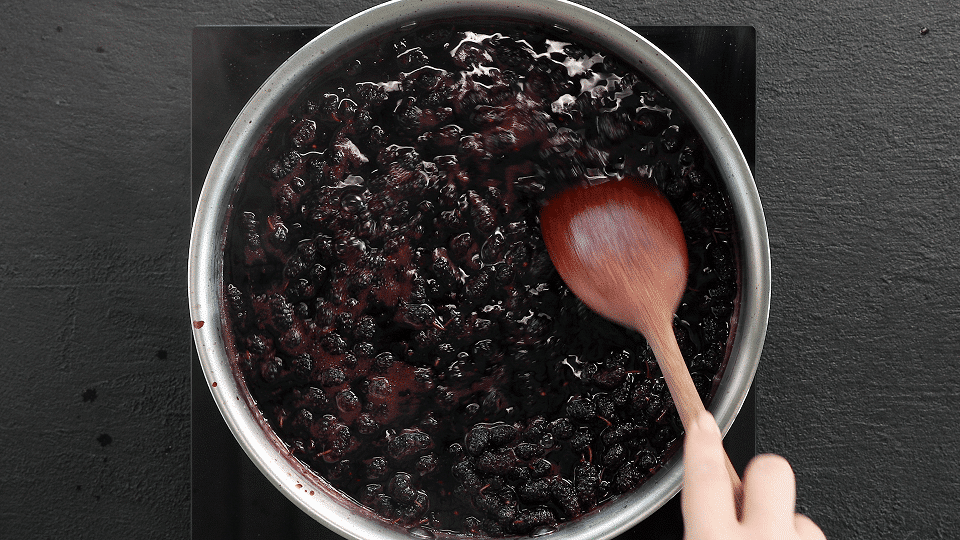
There are endless uses for this sweet, unassuming fruit. We’d love to hear how you enjoy mulberries! Let us know in the comments, or on our Facebook and Instagram pages.
For more foraging inspiration, check out the full Foraged in Pennsylvania series!
- Tart, shrub and sangria media and recipes: Dish Works
- Cover photo: PA Eats
- Mulberry and foraging photos: Bigstock
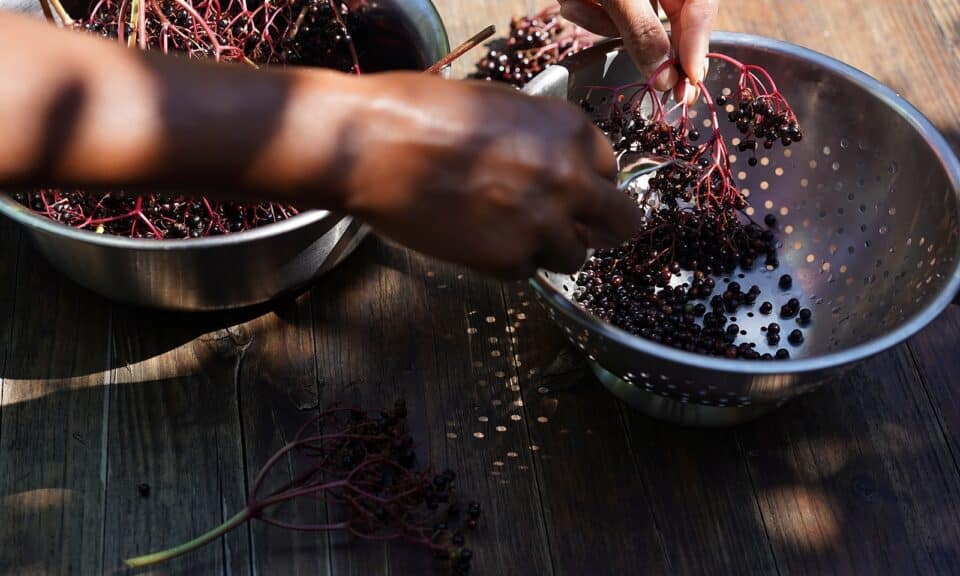
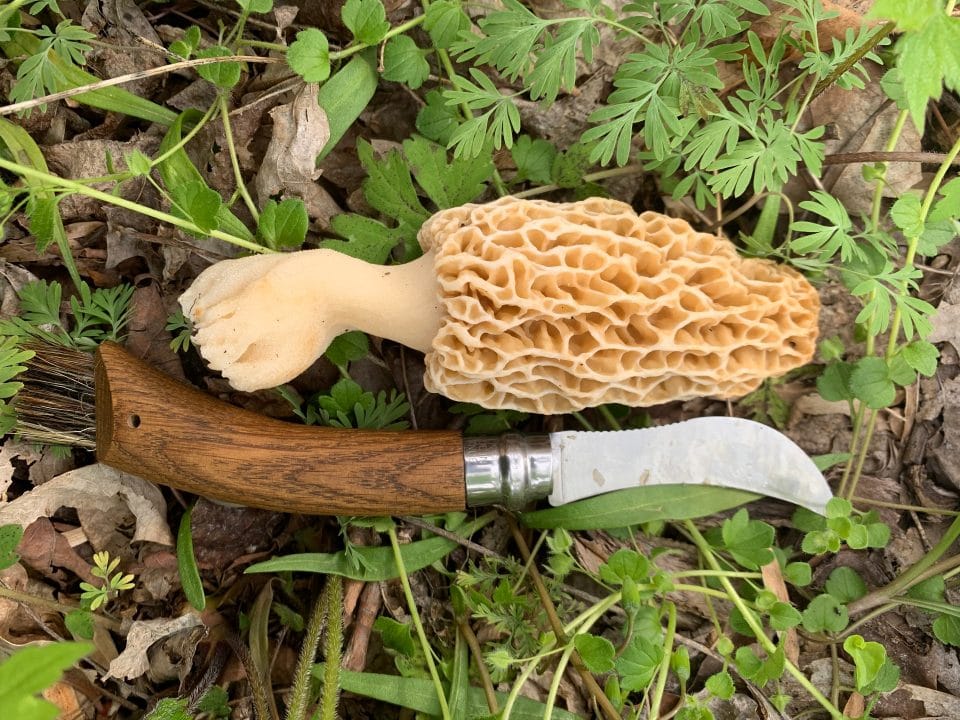
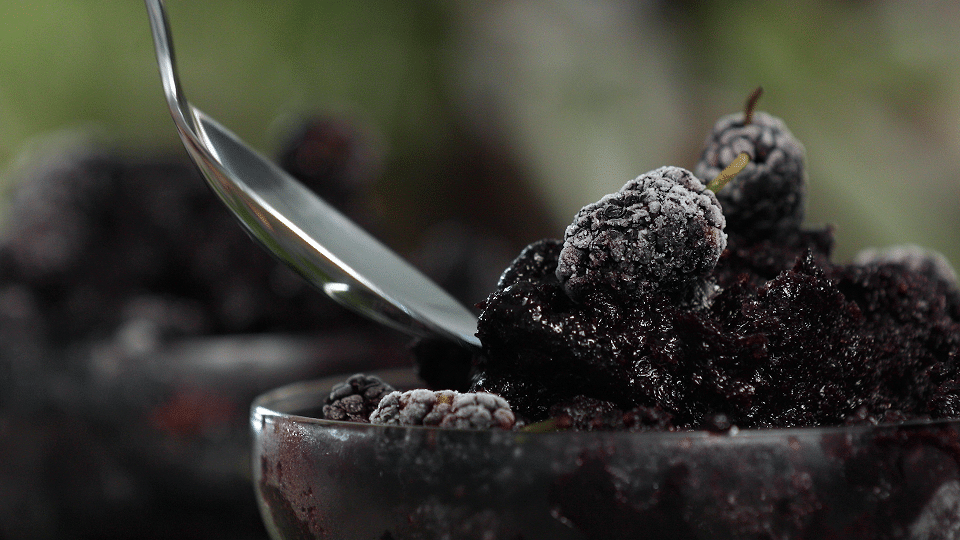
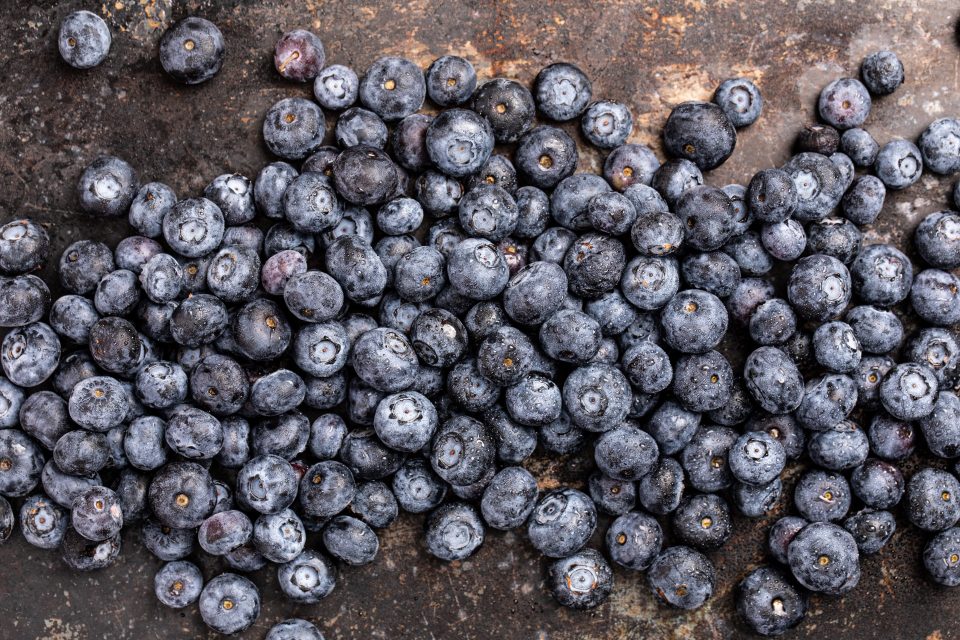

One Comment